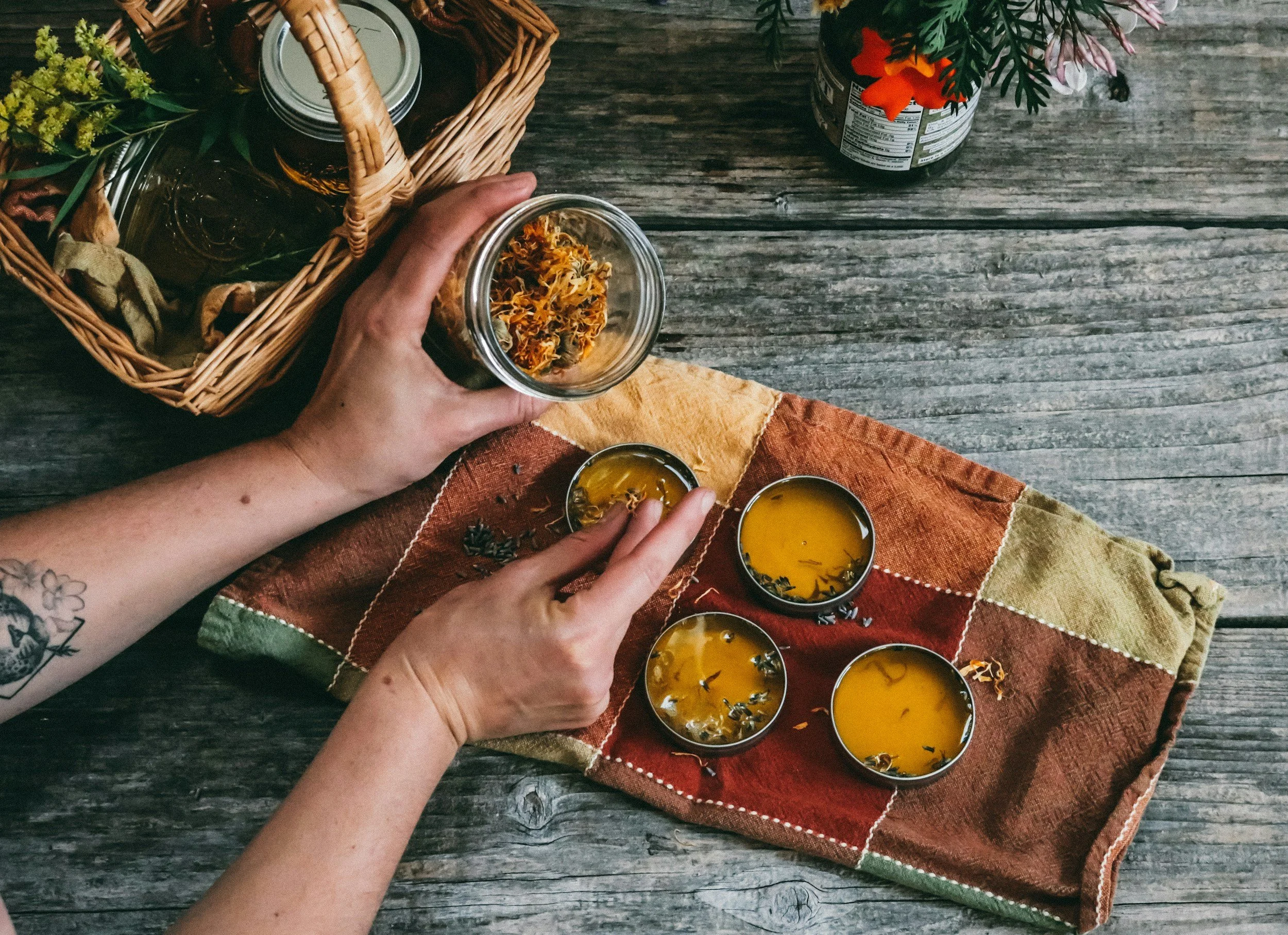Yarrow For Skin And First Aid: Practical Wisdom, Gentle Science, And Everyday Care [Blue Yarrow]
Table of Contents
1. A plant you can trust when life gets scrappy
2. What yarrow is and why it keeps showing up in first aid
3. The skin story, told by tradition and research
4. When to reach for tea, washes, salves, or compresses
5. A day in the life with yarrow in your home kit
6. Sensible safety, especially for allergies and pregnancy
7. Choosing, harvesting, and storing for top quality
8. Where the science stands right now
9. Blue Yarrow’s closing notes
A plant you can trust when life gets scrappy
The first time I tucked yarrow into a pocket kit, I did it because an older gardener told me to. “You will not believe how often you reach for it,” she said. She was right. Scrapes from a fence, a nicks-and-pricks afternoon in the roses, a heat-flushed forehead after a yard day. Yarrow met all of that with a calm, herbal steadiness. Here at Blue Yarrow, we treat it like a reliable neighbor who knows how to help without making a fuss.
Yarrow’s reputation for skin and first aid is not a new trend. It has deep roots in European and North American folk practice, where people leaned on the aerial parts for minor bleeding, inflamed skin, and the general discomfort that comes with small injuries and seasonal challenges. A modern, practical profile that covers identification, basic uses, and safety still reflects that everyday wisdom.
What yarrow is and why it keeps showing up in first aid
Yarrow is Achillea millefolium, a perennial in the Asteraceae family with feathery leaves and flat-topped clusters of small flowers. Crush a leaf and you will catch a clean, herbal scent that hints at its chemistry. People keep returning to yarrow because it seems to do a few things at once. It tightens and tones tissue, it carries aromatic bitterness that helps the body shift gears, and it brings a soothing presence to irritated skin. That is the traditional picture. Contemporary sources that summarize home use still put “minor wounds and skin care” at the top of the list.
The skin story, told by tradition and research
If you open older herbals you find yarrow called “woundwort” and “staunchweed,” names that tell you exactly how people viewed it. Over the past few years, research teams have tried to map those folk claims to measurable effects. A 2022 review gathered work on A. millefolium and the healing process of skin injuries. The authors highlighted antibacterial, anti inflammatory, antioxidant, and moisturizing actions reported in experimental models, and they concluded there is evidence that yarrow can support the healing process in various skin injuries, always within an appropriate medical context.
There is also renewed interest in yarrow’s antimicrobial profile. One lab group evaluated a yarrow extract against Helicobacter pylori, the stomach bacterium that is hard to manage in the clinic. That was an in vitro study, not a treatment guideline, but it adds detail to why yarrow keeps getting attention for its broad antibacterial potential. A later commentary and correction engaged with the methods and results, which is a healthy sign that the field is paying attention to quality.
For our purpose at Blue Yarrow, this means the old first aid stories are not standing alone. They are now accompanied by modern reviews and lab findings that explain why a plant wash or salve might feel so helpful on a rough day, as long as we are talking about minor, clean skin situations and not medical emergencies. Additional broad wound-healing surveys include yarrow among Northern Hemisphere plants used traditionally for skin recovery, which again supports the household role rather than replacing clinical care.
When to reach for tea, washes, salves, or compresses
Most folks begin with yarrow tea because it is simple and introduces the plant in a gentle, familiar way. One to two teaspoons of dried aerial parts in hot water for about ten minutes gives you a cup that tastes clean and a little bitter. Practical herb guides list tea as a foundation for both sipping and for making a cooled wash. That same tea, once cooled, can be used as a simple skin rinse on intact or very minor irritated skin after proper cleaning. The goal is comfort and a sense of tone, not drama or sting.
Topical preparations are the next step. An infused oil made from dried yarrow, strained and blended with a little beeswax, becomes a salve that many gardeners keep in a tin near their gloves. Traditional practice pairs this with careful cleaning and common sense. You do not apply a salve to a deep or dirty wound. You use it on skin that is already clean to support comfort. This is exactly the boundary that modern reviews encourage, since experimental support for wound healing is strongest when the basics of hygiene and medical judgment are respected.
Compresses bridge tea and salve. A fresh cup of yarrow tea, cooled to warm, becomes a soft cloth compress for a small area that feels hot or irritated. The sensation most people report is “settling.” That word might sound subjective, yet it matches the anti inflammatory and antioxidant notes that keep appearing in the literature. Again, this is home care for minor issues. If there is significant pain, spreading redness, or a wound that does not improve, the next step is a clinician, not more tea.
A day in the life with yarrow in your home kit
Let me tell you how a Saturday can go at Blue Yarrow. By late morning the sun is high and the yard is a mix of joy and small hazards. A wire fence catches a wrist. A blackberry cane leaves a shallow line behind your glove.
We bring the day inside for a minute. Hands get washed with soap and water. The small marks are checked as we prepary a tea kettle with our dried yarrow. Ten minutes later the tea is poured into a mug to cool. A cotton pad meets the tea and then the skin. There is no sting, just a gentle herbal scent. Your wounded skin starts to feel better as the yarrow tightens the skin, stopping the bleeding and helping your body heal faster. There is no need to complicate most scrapes when we let yarrow do what it has always done best.
Sensible safety, especially for allergies and pregnancy
Safety is the part we never skip. Yarrow belongs to the Asteraceae family. If you have a known allergy to ragweed, daisies, or related plants, treat yarrow with caution or avoid it entirely. Good herbal references list this clearly. They also remind us that pregnancy and lactation are times for extra care. Some overviews advise avoiding yarrow in pregnancy and while nursing due to limited safety data and concerns about passage through the placenta. Broader reviews on herb use in pregnancy reach the same conservative stance for most botanicals. If you are pregnant, nursing, on medications, or have ongoing conditions, talk with your clinician before using yarrow regularly, even as a tea.
Skin sensitivity is the other point to remember. Even gentle salves can bother a small subset of people. A simple patch test on the inner forearm with a pea-size amount of your preparation tells you how your skin feels about it. If there is redness or itch, wash it off and choose another plant ally.
Choosing, harvesting, and storing for top quality
If you are buying dried yarrow, choose aerial parts that still look alive. Leaves should be a healthy green. Flowers should still have some color. The jar should smell herbal and clean, not dusty or stale. A quick sniff tells you more than a label.
If you are growing and harvesting, aim for a dry morning when the flower clusters are open and the leaves look crisp. Cut the top third of the plant, where the leaves and flowers are at their best. Dry in thin layers out of direct sun until the stems snap cleanly. Store in airtight glass, away from heat and light, and label your jars with the date. These basics give you consistent results at home.
Where the science stands right now
If you like to understand the “why,” there is a growing body of work to explore. The 2022 skin-injury review synthesizes antibacterial, anti inflammatory, antioxidant, and moisturizing findings across multiple experimental models and concludes that Achillea millefolium can improve the healing process of various skin injuries in those settings. This lines up with gentle topical traditions.
The same year, investigators evaluated a yarrow extract against Helicobacter pylori and reported antioxidant and anti inflammatory properties along with antimicrobial effects in vitro. A formal commentary discussed aspects of the analysis, and a later correction appeared, which is part of normal scientific refinement. For the household this means we can speak confidently about interesting lab signals without overpromising. It keeps our claims true and useful.
Wider wound-healing overviews continue to include yarrow among traditional Northern Hemisphere plants used on the skin, which anchors our modern practice in a long, cross-cultural pattern.
Blue Yarrow’s closing notes
There is a reason this humble meadow plant sits at the front of so many home kits. It is trustworthy. It helps you move from flustered to steady after the little scrapes and irritations that come with real life. It rewards simple habits. Clean the skin. Brew a cup. Cool it. Use a wash, a compress, or a small amount of salve on intact or very minor irritated skin. Watch for any sign that you need professional care and make that call without hesitation.
At Blue Yarrow, we keep our feet on the ground and our story honest. Tradition gives us the map. Research fills in the landmarks. Your own experience completes the picture. When you put yarrow on the shelf, you are choosing a plant that has earned its place one quiet success at a time.

